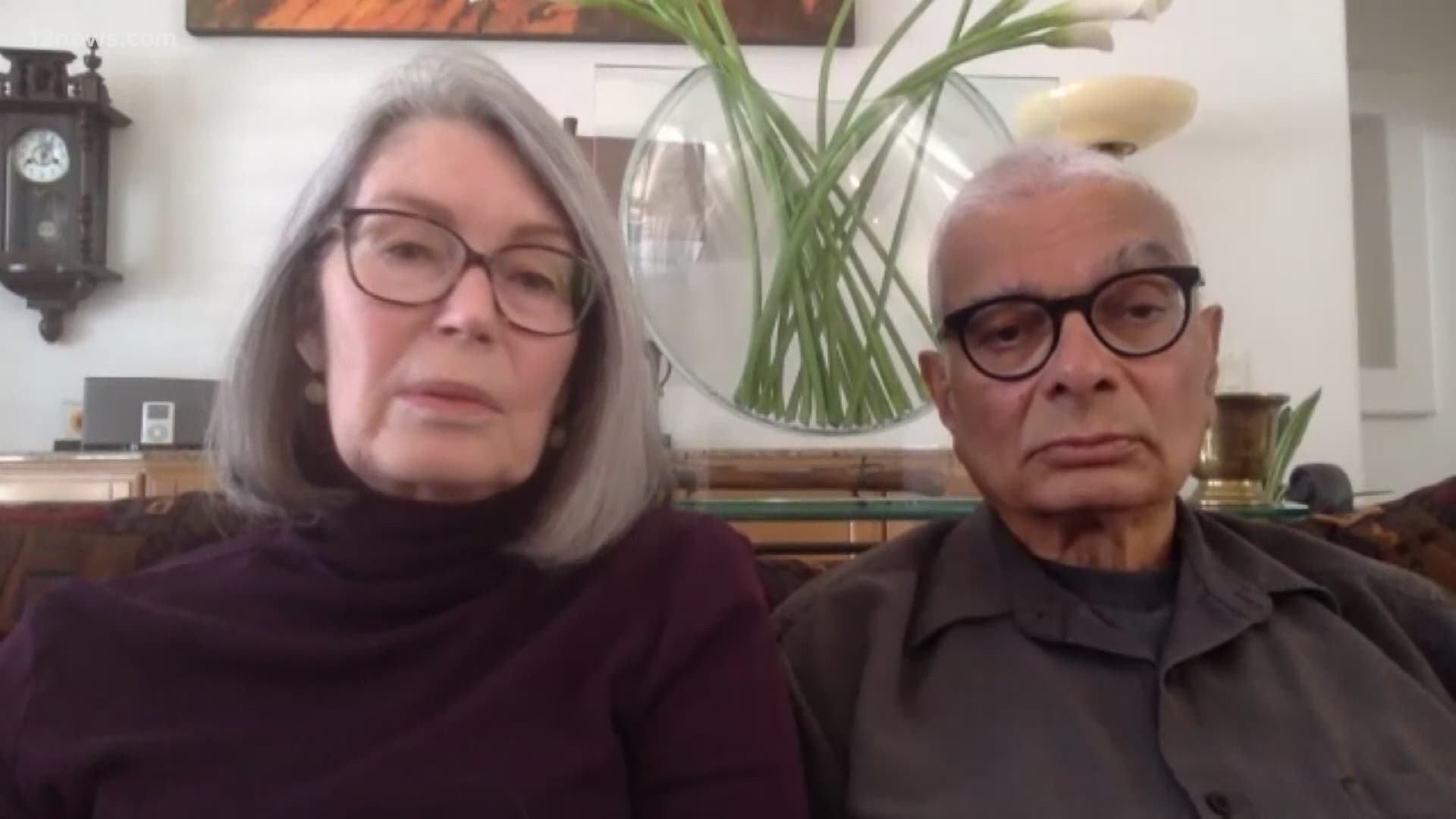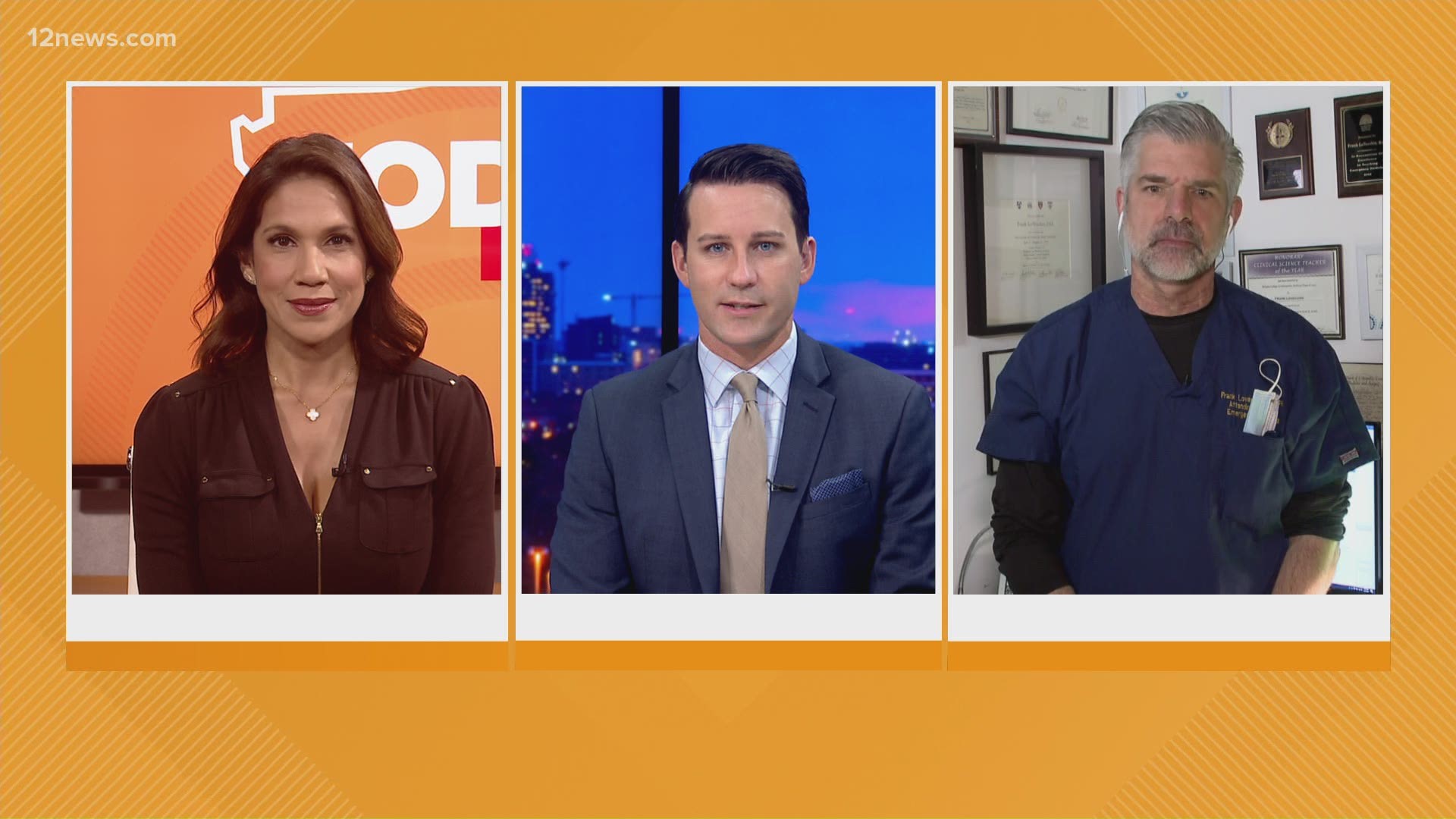PHOENIX — COVID-19 hospitalization trends continue to slowly decline, which is welcome news for Valley hospital leaders as they work to treat those sickest with the virus.
However, they continue to warn getting back to pre-spike levels will take time.
Downward trend in COVID-19 data continues
The winter spike of COVID-19 in Arizona is starting to reverse directions.
Patients with the coronavirus have been using fewer hospital and ICU beds since Jan. 11. That’s the date when the state reached an all time high of 5,082 COVID patients in the hospital and 1,183 in the ICU. As of Jan. 26, those numbers have dropped to 4,250 and 1,024, respectively.
“I think that this is a testament to being further away from our holiday season,” Dr. Michael White, Chief Clinical Officer for Valleywise Health, said. “But also, with the help of the community, maintaining their masking, maintaining their social distancing as we get through this.”
While things are looking better in Valley hospitals, Dr. Marjorie Bessel, Chief Clinical Officer for Banner Health, notes the hospitals are in no way back to “normal”
“We are currently caring for more COVID-19 patients in our Arizona hospitals and ICUs than we were during the peak of the summer surge,” Bessel said.
Banner’s hospitals continue to allow only some elective surgeries to take place. Those were paused for some time system wide at the height of the surge to open up capacity.
“We have a long way to go before we can return to more normal operations that we experienced for a brief period back in September,” Bessel said.
Staff are leaving hospitals
Valley hospitals have noted they are losing staff as the pandemic has kept going.
Bessel said staff from Banner hospitals have left due to exhaustion from the pandemic.
“We hope that with some time and some rest, perhaps they can come back into the health care industry,” Bessel said. “We certainly need all of them.”
White said their facilities have also had frontline workers leave for ‘a variety of reasons’ during the pandemic.
“For folks who may have had opportunities to travel to other parts of the country and work in traveling staff, you know, those that have chosen to leave healthcare, or just maybe chosen to spend time away from healthcare for a while,” White said.
Leaders warn that fewer mitigation efforts could lead to more deaths
While leaders use caution around the downward slope of COVID-19 data, Bessel warns it’s not the time to stop mitigation efforts.
In the press conference Wednesday, Bessel referenced projections for Arizona by the University of Washington’s Institute of Health Metrics Evaluation (IHME), showing come May, Arizona could see 18,567 deaths from COVID-19.
If mitigation efforts decrease, IHME predicts 22,151 Arizonans could die from COVID-19 by May 1.
“Vaccine is a long-term strategy,” Bessel said. “Which is why the IHME tool does not indicate that it will have a significant impact on preventing deaths here in Arizona during the next few months as we descend from this surge.”
Herd immunity is a while away
Bessel added 80% of people will need to be vaccinated against COVID-19 in order to achieve herd immunity.
“We all know that the more vaccines we administer and the faster we do it, the sooner we will emerge from this pandemic,” Bessel said.
According to the Arizona Department of Health Services, more than half a million doses of the COVID-19 vaccine have been distributed. That means about 7.2% of Arizonans have been vaccinated so far.
AZDHS said the lack of vaccine supply has kept them from vaccinating more people, and their request for an additional 300,000 doses per week, on top of their current allocation, from the federal government has been denied.


